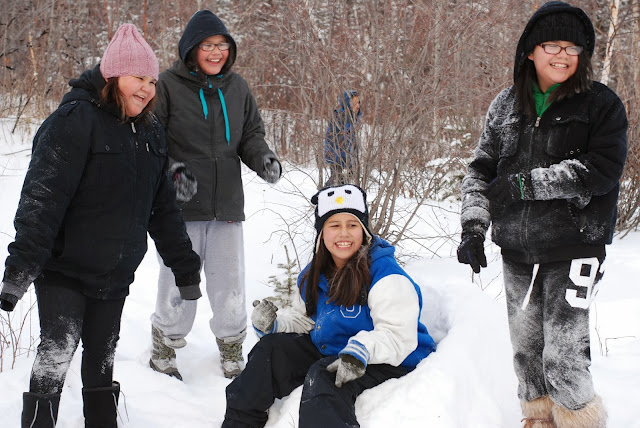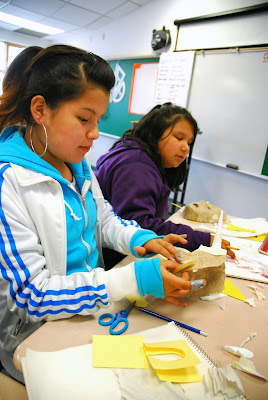I’ve
spent the better part of two months convincing myself that we cannot have a
dog, while at the same time allowing myself to become increasingly attached to
a particular stray puppy. This week we finally broke and took her into our
home, bathed her, fed her, and decided we would try and find a home for her.
Within a day we called her ours and named her Korra.
 |
| Beginning of September |
 |
| End of October |
After
three days of feeding consistently she looked completely different. She was
beginning to put on weight, was more playful, and less stressed. Two other
teachers took in the little white dog the same day we did and named him Olli. They
planned things a bit better than we did. First they went to the director of
education about having a dog. There is policy (which we have only heard and
never read) that says teachers can’t have pets in their houses. It makes sense
that pets that aren't vaccinated and fixed would be discouraged because they
could potentially add to the stray problem. But any argument that a pet would wreck
the units is ridiculous. There is more damage in our unit from past residents
than could ever have been caused by a dog. There is no reason why a well-cared
for pet shouldn't be allowed. He agreed that the policy was dated and that they
would look at it again down the road and that for now we should just take them
in and be quiet about it.

In
celebration of our success, we took Korra over to play with Olli and they
wrestled for a while before passing out. While I have seen them wander around together
I don’t think I've ever seen them play before. It was really wonderful to see
them fed and happy. So we started to plan for the long term. Getting medication
and vaccines shipped up was a concern. Luckily Olli’s new owner’s father is a
vet, so he can send her the needed medications in the mail.
But
it wasn't to last. I took her out for her first walk yesterday (up until then
we had just been letting her out on her own) and she ran right up to another
house. Not a teacher’s house but a local’s, and pawed at their door. Ender and
I went to see if she had ‘owners’ so that we could offer to buy her. Her care
certainly suggested she was more of a burden or an annoyance than a member of
the family. They told us she belongs to their daughter, that her name is Georgia
and that they were in fact feeding her. She sleeps under the step and sometimes
they try to tie her up. We informed them that all of the teachers were under
the impression she was a stray, that a number of us were feeding her because
she was starving and that if they did not increase the amount of food they are currently
giving her she would likely die sometime this winter. They were unwilling to
give her away or sell her so we left. We’ll continue to keep an eye on her, but
unless her condition takes a real turn for the worse we can’t do anything more.
The thing is I didn't want a dog right now because of the amount of traveling
Ender and I do. But I wanted this dog and having already committed to the idea
of her being ours it’s going to take some time to let her go.

Garden
Hill like most reserves has a stray dog problem. This is for a few reasons. The
first being that without a vet in residence there is nowhere to take these dogs
to get the medical care they need. A
trip to the vet is a trip into the city and an already costly procedure becomes unaffordable for people living in remote communities. Without these services keeping
these dogs healthy and preventing over population is nearly impossible.
Secondly
dogs are abandoned when the cost of feeding and sheltering them become too much
for their owners. Poverty on reserves means many families can’t afford to feed and
shelter their children let alone a dog. Either the dog is turned away, or it
ventures out on its own to scavenge for food amongst the garbage. If they form
packs they can be more successful hunters, but then they pose a danger to the
health and safety of the community and have a huge impact on the local wildlife
and environment.

I
would also argue that many families don’t know how to properly take care of their dogs. We've met children who are shocked when we tell them that their puppy feels
pain or that they can’t feed them candy and garbage. I've seen and removed many
interpretations of dog collars, from pieces of rope, to elastic bands, to zip-ties.
Children who are abused at home are also more likely to re-enact their abuse on
a dog. And yet when a dead puppy is found near the school, its skull crushed
and its body beaten it’s not a priority to find the culprit and get them help. Residential
school survivors, of which our community has many, carry the effects of their separation
and abuse across generations. The state of and treatment of the dogs is as much
an indication of this as the anything.

But
people still want pets, and dogs have always played a significant role in the lives
of First Nations peoples. That doesn't mean they are happy with the situation,
just at a loss with what to do about it. The truth is periodic inhumane dog
culls do nothing to stop the problem and instead fuel animosity and distrust for
the dogs. However, communities in Ontario and Alberta are finding solutions.
Teaming up with organisations like WSPA has helped some reserves to more
effectively care for and manage their dog population. Here it is frowned upon to care for the
dogs when in reality it’s the simplest solution. “Well cared for and properly supervised
dogs rarely cause a problem for the community. If dogs are receiving food,
water, shelter and proper training, they tend to stay closer to home” says Josey Kitson, Project Manager for the World Society for the Protection of
Animals (WSPA).

Dog management programs are aimed at reducing or maintaining a
sustainable dog population which includes not just sterilization or contraceptive
implants, but also education, policy development, by-law enforcement, and
registration and identification of dogs. It can also mean shelters for strays
and adoption and fostering programs. But first the community needs to decide
that it’s a priority issue; they need to recognize it’s less costly in the long
run to take on the problem rather than ignore it.





















































